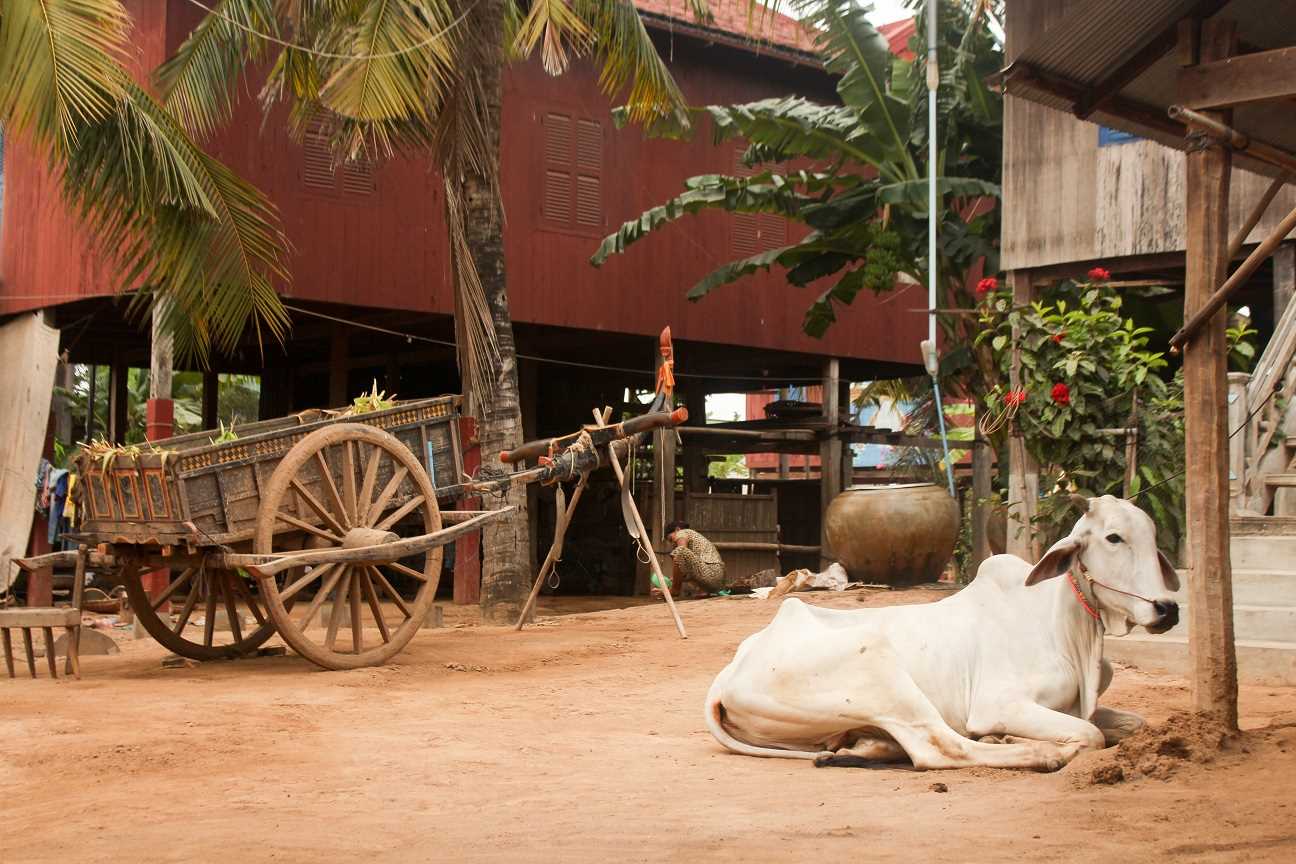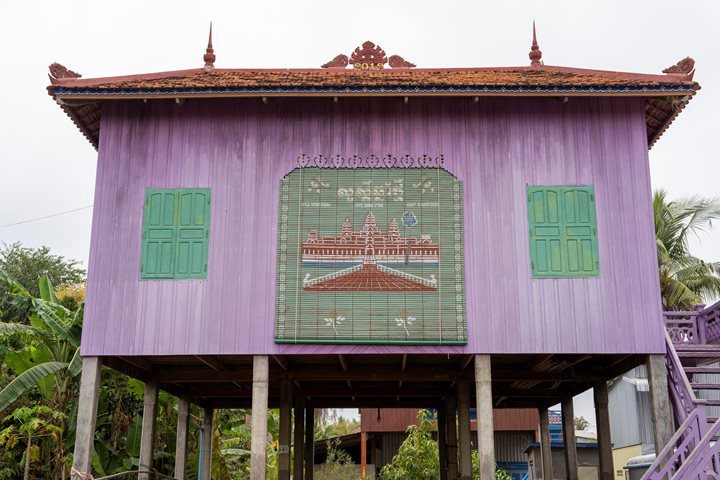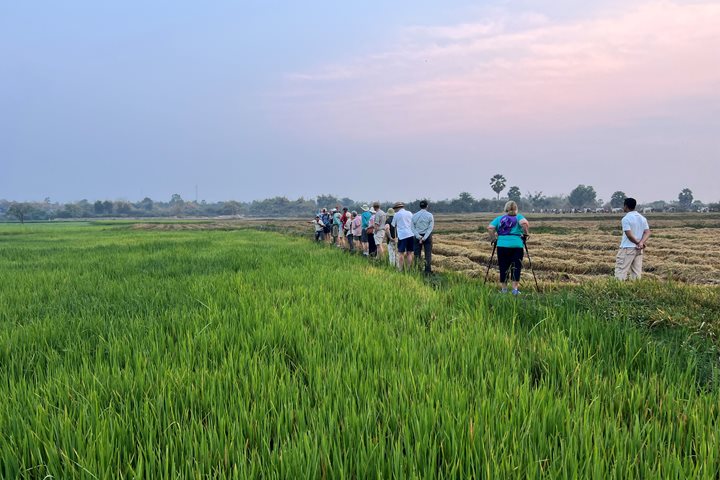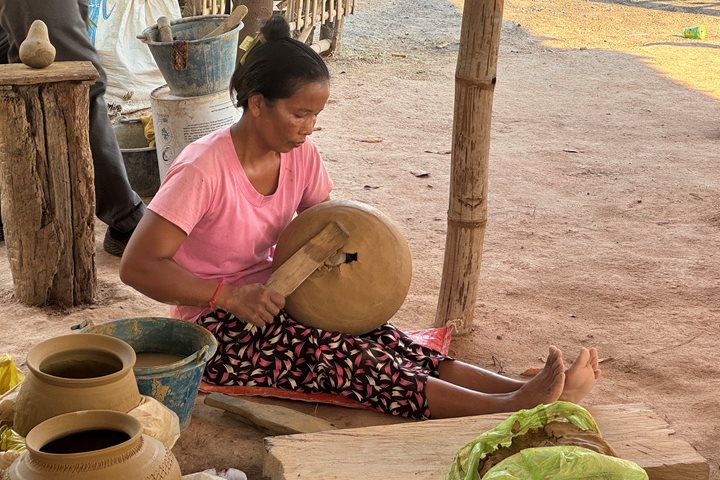Today we awoke to an unexpected sight, a thick blanket of fog laid across the river which restricted visibility to around 100 feet. As the sun came up this started to clear but we were fortunate that the morning was largely overcast and (relatively) cool. A multitude of barn swallows is buzzing around Jahan as they are feasting on the swarm of flying insects which are attracted to the ship’s lights overnight. After our own hearty breakfast, we headed to shore. Our morning excursion took us to the small village of Angkor Ban, situated on the banks of the Mekong in Kampong Cham province. Kampong Cham is one of the wealthier and more developed parts of Cambodia, but Angkor Ban remains relatively undeveloped. They only had electricity connected in the last decade. Winding our way around houses and farming equipment, through laneways and backyards, we encounter all manner of domesticated animals. A village elder even lets us check out their stilt house.
Back on Jahan, we are treated to double feature – cultural specialist David Brotherson talks us through a traditional Cambodian wedding (his very own), and naturalist Martin Cohen presents his video compiled from the last 6 days on the Mekong. The afternoon sees us pulling into Kampong Cham city, the provincial capital. It’s wide and orderly boulevards hint at the region’s prosperity. After we climb the river bank, we take local buses to the monastery and archaeological site of Wat Nokor. Built in the late 12th century during the reign of Jayavarman VII, Wat Nokor, like most Angkorian period temples, is still an active place of worship. At the centre of the temple we can even see the central part of the bas-relief is adorned with gold leaf. Once again, a sign of local prosperity, and a reminder of how the entire tower would have appeared 800 years ago, beautifully gilded and glittering in the sun.
February 16th is also the first day of Tet, with 2018 being the year of the dog. The lunar new year festival (new moon) in February is a tradition shared by Vietnam and China, and wherever Chinese migrants have settled around the world. The actual date varies from year to year as the cycles of the moon are not synchronised with the Gregorian calendar. In contrast, Cambodia (along with Thailand, Laos and Myanmar) celebrate their new year in April on a fixed date, marking the end of the harvest season and based on the solar calendar. Nevertheless, many Khmers observe the Chinese New Year, and we can see the characteristic red lanterns strung up in front of various houses along the streets and many Khmers claim some kind of Chinese ancestry. Indeed, Chinese merchants have long been present in Khmer society as we know from the account of Zhou Daguan (1296 AD), the only eye witness account of Angkor available to us. Chúc mừng năm mới - Happy New Year!







